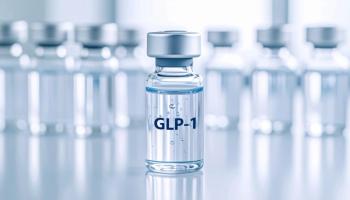
Common Plastic Component Bisphenol A Associated with Epigenetic Changes
A study indicates that BPA-induced cancers in female rats may lead to tumors with evidence of both genetic and epigenetic changes.
A study indicates that BPA-induced cancers in female rats may lead to tumors with evidence of both genetic and epigenetic changes.
The chemical bisphenol A (BPA), which is a component of many common plastics, may change the expression of genes in the mammary glands of rats, according to the results of a new study published July 2, 2014 in the journal Plos One.1
Researchers explained that the estrogen-like chemical might trigger gene expression patterns that could activate breast cancer. Researchers exposed female rats to a high dose of BPA (250 micrograms/kg/day), which has been shown to induce ductal carcinoma in rats. Researchers analyzed the mammary glands of exposed rats and noted genetic changes that occurred in rats exposed to BPA, but not in rats receiving injections of an inert vehicle.1
With the number of new diagnoses of breast cancer approaching one-quarter million per year, even concerns from animal experiments may raise questions about the safety of some types of BPA-containing plastics. Professor and researcher at Washington State University Michael Skinner, PhD, noted that these studies in rats may be relevant to humans.2
“From rats to mice to humans to primates, we all have almost exactly the same organ system and very similar endocrinology,” Dr. Skinner said.2
Beyond gene expression, some of the changes induced in the rats indicate that BPA might induce epigenetic abnormalities. These changes, which are obtained during one's lifetime, may be passed on to offspring.2
The ubiquity of BPA in the environment may be a concern for the health of women and the future health of their children. BPA is found in the lining of canned food products, the lining of aluminum soda cans, and in dental sealants. Even receipt paper contains BPA.2
One limitation of the current study is the disparity between the dose administered to rats in the study and the dose received by humans in daily life. The FDA estimates that adults receive 0.185 micrograms/kg/day of BPA and infants are exposed to 2.42 micrograms/kg/day. These amounts are 100 to 1000 times lower than the amounts used in the current study, in which rats received BPA at a dose of 250 micrograms/kg/day.1,3
The FDA continues to assert that current low levels of human exposure to BPA are of no serious concern. Current FDA action has been limited to the use of BPA-containing plastics in the manufacturing of infant feeding cups and baby bottles. Although the FDA supports further research, their current position, “is that BPA is safe at the very low levels that occur in some foods.”3
References:
- Dhimolea E, Wadia PR, Murray TJ, et al. Prenatal Exposure to BPA Alters the Epigenome of the Rat Mammary Gland and Increases the Propensity to Neoplastic Development. PLoS One. 2014;9(7):e99800.
- Bienkowski B. BPA triggers changes in rats that may lead to breast cancer. http://www.environmentalhealthnews.org/ehs/news/2014/jul/bpa-mammary-glands. Accessed July 2014.
- US Food and Drug Administration. Bisphenol A (BPA): Use in Food Contact Application. http://www.fda.gov/newsevents/publichealthfocus/ucm064437.htm. Accessed July 2014.
Newsletter
Stay informed on drug updates, treatment guidelines, and pharmacy practice trends—subscribe to Pharmacy Times for weekly clinical insights.

















































































































































































































